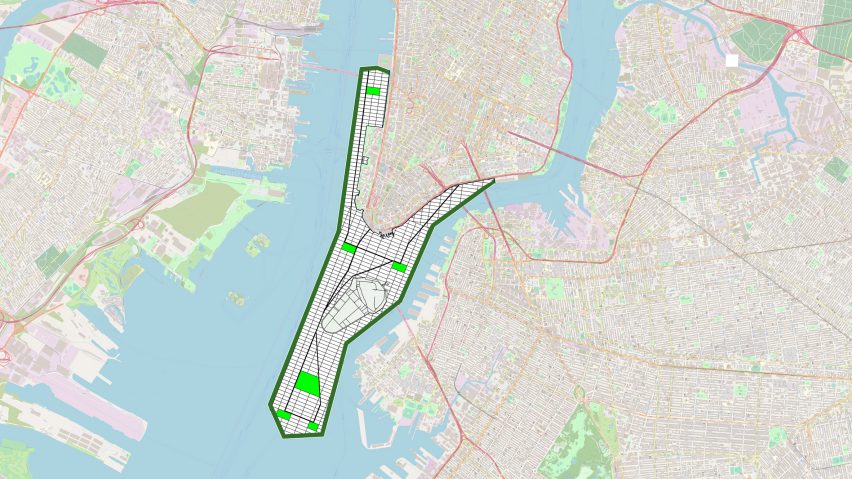Rutgers professor Jason Barr has proposed adding 1,760-acres of reclaimed land, named New Mannahatta, to the tip of Manhattan to provide housing and combat climate change.
Called New Mannahatta in reference to the indigenous name for the island in New York, the plan would extend Manhattan Island into New York Harbor beyond the Statue of Liberty.
Barr, a professor of economics at Rutgers University, outlined his plan in an opinion piece directed at the city's mayor Eric Adams, which was recently published in the New York Times.
New Mannahatta can "help solve two major crises in New York"
Barr argues that the extension to Manhattan, which would incorporate Governors Island, would help build resiliency to the threat of rising sea levels. It would protect vulnerable areas and be designed with wetlands and marshlands around its perimeter to absorb storm surges.
The 1,760-acres of new land bounded by the Hudson and East rivers would also provide 180,000 new homes that could house 247,000 people.
"The goal of New Mannahatta is to help solve two major crises in New York City," Barr told Dezeen.
"First is the ever-looming problem of storm surges and flooding due to climate change. Second is that New York needs more housing. There is a major housing affordability issue in the city and any boost to supply can help alleviate the problem."
"The city can't tinker its way out of its problems"
Although the proposal is dramatic, Barr believes that large-scale initiatives are needed to help solve the growing issues facing the city.
"Drastic action is needed because the status quo of small steps has not proven adequate to the tasks at hand," he explained.
"Superstorm Sandy in 2012 and Hurricane Ida in 2021 demonstrated how devastating surges and flooding can be, and yet little action has been take on that front. And housing prices continue to rise," he continued.
"The city can't tinker its way out of its problems. The time has come to think creatively and boldly."
According to Barr, the proposal builds on previous historical precedents as Manhattan Island has been extended numerous times since it was settled by Europeans in the 17th century.
"Creating new land through infill is a centuries-old tradition," explained Barr. "Lower Manhattan, south of City Hall, has been expanded by nearly 50 per cent. The Dutch, then the English, then the Americans created this land because it helped New York's economy grow and thrive."
"There is a certain economic logic to it"
Barr calculates that financially the proposal could be feasible due to the high cost of real estate in New York.
He calculates that the difference between building construction costs and housing sales values could be used to fund the creation of the artificial land and associated infrastructure.
"I'm mindful of the 'pie-in-the-sky' aspect of it, said Barr. "However, if you crunch the numbers, there is a certain economic logic to it."
"The value of real estate in the city now runs so much higher than the average cost of creating or replacing the buildings, that, in principle, the city could use this differential to its advantage," he continued.
"Lower Manhattan is some of the most valuable and important real estate in the world, why not produce more of it? If the city is going to spend billions on flood walls and other resiliency projects, why not also try to get more housing out of it is as well?"
The New York government has been grappling with how to protect the city from climate change for many years. In 2019, then mayor Bill de Blasio revealed a multi-billion dollar proposal to redesign the "vulnerable" shoreline of Lower Manhattan.
Danish studio BIG and landscape architecture firm James Corner Field Operations are designing a mixed-use development in the city with a beach designed to protect the shoreline from flooding.
The image is courtesy of Jason Barr.

